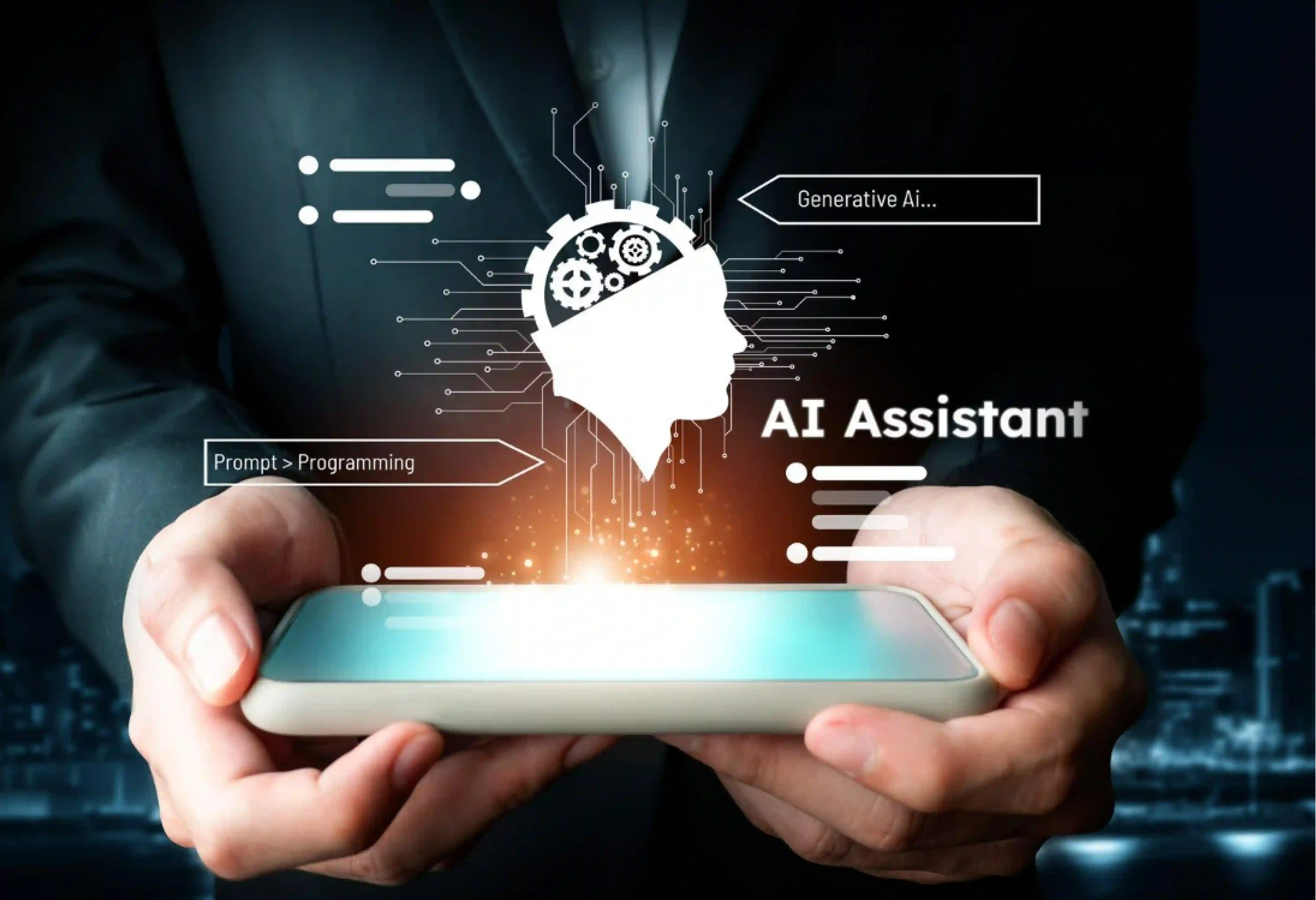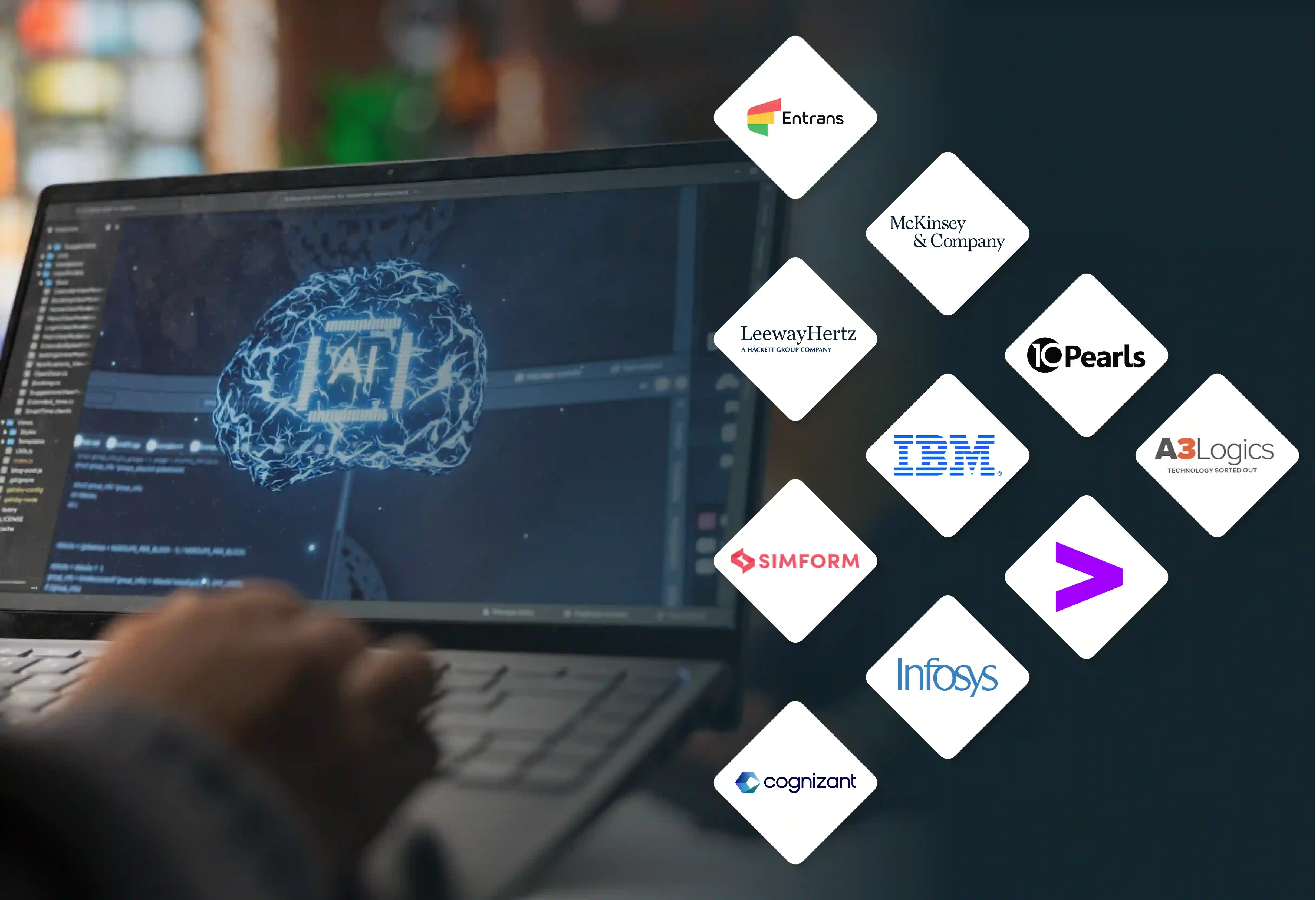A concise understanding of Gen AI vs Agentic AI is what the enterprise needs right now. Both Gen AI and Agentic AI are used for different scenarios. To put it in simpler terms, Gen AI addresses the “What” (content, plan, insights) and Agentic AI addresses the “how and the when” (autonomous execution across systems). Choosing the right model gives us transformation timelines, budget allocations, and a measurable ROI.
In this article, we will explore the differences between Gen AI and Agentic AI, their applications, and how these AI models complement each other to unlock maximum efficiency across teams and processes.
What is Generative AI?
Generative AI is a type of Artificial Intelligence that learns from existing data to create new content. It can generate text, images, audio, code, videos, and more in response to user prompts or requests.
It uses advanced machine learning models such as deep learning and neural networks to analyze vast datasets and create content based on learned patterns and user prompts.
What is Agentic AI?
Agentic AI denotes an advanced AI system capable of autonomous decision-making and action with minimal human intervention. They work by breaking down complex objectives into smaller steps and adapting their strategy based on real-time feedback and changing conditions.
Agentic AI vs Generative AI: Core Differences Explained
In simple terms, Generative AI creates content, whereas Agentic AI plans and acts to get the job done. Gen AI vs Agentic AI differences are explained below.
| Features |
Generative AI (Gen AI) |
Agentic AI |
| Basic Difference |
Gen AI generates content like text, images, code, and audio based on user prompts. |
Agentic AI is an autonomous AI that plans, decides, and achieves goals with minimal human interaction. |
| Scope |
Content creation |
Automating a task and executing it. Problem solving |
| Key Capabilities |
Creates content across various domains. |
Adaptive planning and execution with limited supervision. |
| Task Execution |
It is best for a single-step process like drafting an email, etc. |
It is best for complex and multi-step workflows. |
| How It Works |
It generates output based on pre-trained datasets with no feedback. |
From the feedback, it continuously learns and changes the process execution. |
| Output |
Only static content like code snippets, images, etc. |
Functional outcomes like task execution and automating the process. |
| Human Interaction |
It needs the user to give a prompt. |
Once a goal is set by the user, it operates independently without depending on the user. |
| How Both Are Used |
It can be used by Agentic AI to execute the task. |
It uses Gen AI to create the task and then act upon it. |
| Use Case and Examples |
Chatbots, image generation, and code suggestions. |
Customer service automation, workflow orchestration, and data pipeline monitoring. |
| When to Choose |
Choose Gen AI for content and creativity. |
Choose Agentic AI for task automation, processing, and operational efficiency. |
Where Generative and Agentic AI Intersect
Generative AI and Agentic AI are found where Gen AI systems serve as the core intelligence and creative engines for the Agentic AI framework. In simpler terms, Agentic AI uses the content that is being generated by Gen AI. When both of them are combined, they have several advantages.
- Content creation: Large Language Models (LLMs) are considered the brain for Agentic AI. They help Agentic AI to achieve a goal. Agentic AI can be designed to decide when to use its generative capabilities. Gen AI creates a copy of the articles, where Agentic AI schedules, distributes, and optimizes content delivery based on audience engagement, improving efficiency and targeting.
- Tools used: Gen AI’s capabilities to translate natural language into structured outputs, such as database queries and API calls, are used by the Agentic AI. LLM generates a specific command to interact with external tools and generates human-readable output.
- Task execution: Agentic AI uses APIs, databases, and enterprise systems. Gen AI enhances this with natural language reasoning and turns goals into executable instructions. Through this, the business can combine automating entire outcomes.
- Dynamic outputs: Gen AI gives the content based on the user's tone. Through this, Agentic AI can learn about the user preferences and reshape its workflows, and give results based on the preferences.
- Enhanced customer service: We can use Gen AI to draft responses for chatbots, while Agentic AI can handle customer issues and take action for that.
Use Cases and Industry Applications
Gen AI and Agentic AI are transforming nearly every industry. Some of the use cases where Gen AI and Agentic AI are applied are
Gen AI:
- Content creation: Gen AI is mostly used to automate marketing copy, product descriptions, social media posts, and multimedia content. It takes the marketing campaign to the next level in all industries, like retail, media, and entertainment.
- Software development: Generative AI is changing the game in software development. Gen AI’s Chatbots, ChatGPT, and many other AI act as an assistant to the developers. They help in generating the boilerplate code, reviewing code, and thereby boost productivity.
- Manufacturing: Gen AI is used to enable predictive maintenance, quality control, optimized production planning, and supply chain resilience.
- Healthcare: It is used for generating personalized treatment plans, enhancing medical imaging, and automating clinical documentation.
Agentic AI:
- Workflow Orchestration: Agentic AI manages end-to-end business processes such as IT operations, financial transactions, and supply chain logistics autonomously.
- Robotic Process Automation (RPA): Agentic AI governs robots that interact with multiple enterprise systems and perform repetitive tasks.
- Healthcare: Agentic AI will take care of patient registration, fixing appointments, processing the claims, and getting the results from labs.
- Manufacturing: Agentic AI is used for quality control routing, restocking inventory, and procurement workflows.
- Insurance: Agentic AI will do claims adjudication routing, fraud detection follow-ups, and document verification tasks.
Why Understanding These Differences Matters for Enterprises
Understanding Agentic AI vs Gen AI is critical for enterprises. Enterprise should decide on where and when to use the Gen AI and Agentic AI. Some of the reasons that clearly show their differences are
- Strategic Alignment: Choosing the right AI technology for their goals is important for achieving determined growth. Check the purpose for which the AI is used, whether it is for creative support (Gen AI) or automation (Agentic AI).
- Workforce Planning: Gen AI needs skilled persons to give the prompt, while Agentic AI focuses on strategy and oversight of autonomous workflows.
- Risk Management: Agentic AI needs governance and compliance standards to be maintained for its output. It requires careful management so that its associated risks can be managed.
- Automation mapping: We need to correctly decide which AI to use to improve the organization’s path. Use Gen AI tools like Copilots for improving employee productivity. Use Agentic AI when it is necessary to make a decision and complete an end-to-end business process.
Trends Shaping the Future of Agentic and Generative AI
The future of Gen AI and Agentic AI goes beyond content generation and automating tasks. Agentic AI will provide structure, tools, and autonomous capability to translate into real-world outcomes. Gen AI will provide more creativity and act as a reasoning engine. Some of the key trends that reshape the future technologies are
Agentic AI:
- Multi-Agent Orchestration: Agentic frameworks will use more specialized AI agents, such as research agents or execution agents, to communicate, delegate tasks, and solve multi-step business problems. Gen AI will still be used as the backbone for Agentic AI.
- Real-world tools integration: Agents will integrate with real-world applications and IT infrastructure using APIS to interact with systems and devices.
- AIOps: Agentic AI will monitor, manage, and self-heal IT and cloud infrastructure. With real-time insights, they will predict issues and apply solutions without human intervention.
- Integration with core systems: Agentic AI will move beyond niche applications and go towards major enterprise platforms such as CRM, ERP, and SCM.
Generative AI
- Domain-specific models: The Future will see more specialized models according to the industry for a deeper understanding and give us accurate outputs.
- RAG: Gen AI will integrate Retrieval Augmented Generation (RAG) to verify the data. This combination addresses key enterprise concerns of hallucinations and data security to act based on reliable, specific knowledge.
- LLM: Large Language Models (LLM) are becoming efficient, cost-effective, and faster, enabling real-time AI across business workflows.
- AIaaS: AI as a Service (AIaaS) and open-source models will induce more innovation in generating content, images, text, etc.
How Entrans Bridges Generative and Agentic AI to Deliver Real-World Impact
Entrans builds AI-first solutions that drive real-world outcomes. We combine the positive side of Gen AI and Agentic AI and achieve measurable results. We bridge Gen AI and Agentic AI using a modular framework that treats Large Language Model (LLM) as the reasoning core within an autonomous execution loop.
Gen AI as Brain
- A Gen AI model is used to generate the complex, multi-step plan using Prompt chaining and techniques like Chain of Thought (CoT).
- We use Retrieval-Augmented Generation (RAG) methodologies and get real-time (contextual) insights.
- Now the Gen AI model is deployed to generate the output during the agent’s run.
Agentic AI as Hands
- We wrap the generative intelligence within an Agentic framework. Using tools, Gen AI generates the intent, and the Agentic layer translates this into an executable call.
- Through a continuous loop, we execute and take care of processes.
- Using MLOps and DataOps, we ensure that AI agents are ready for production.
Through this hybrid approach, we have reduced manual effort, accelerated decision-making, financial operations, and enhanced customer experience.
Want to know more about how we have improved productivity, shortened time-to-value, and delivered real-world impact across industries? Contact us today.
How we built our own Enterprise AI Agent - Thunai
Thunai is an enterprise platform developed by Entrans that uses generative AI to power voice agents, chat agents, email agents, and human-like sales. Its key features include context-aware generation, human-like conversation, and automated content creation with multi-lingual support.








